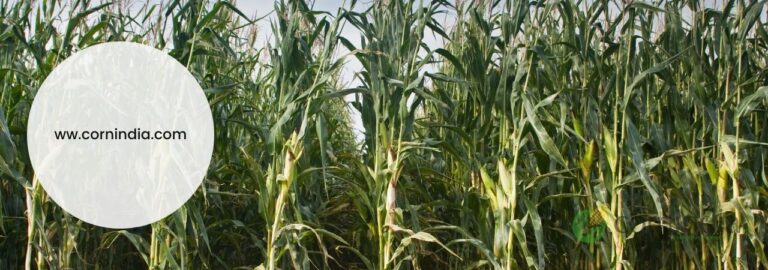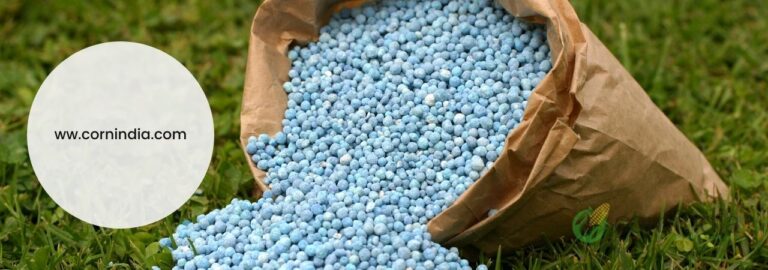
Maize Cultivation in Andhra Pradesh is mainly grown in Karimnagar, Warangal, Medak, Nizamabad, Adilabad and Randgareddy districts of Andhra Pradesh. This area forms the maize belt of this state. About 2.5 lakh hectares of maize are grown under rain-fed situations in the Kharif season while around 0.6 lakh hectares are grown during Rabi under irrigated conditions. There is immense scope for growing maize as an irrigated crop under Srirampadasagar and Nagarjuna sagar projects and also in the non-traditional areas of the remaining districts of Andhra Pradesh.
Table of Contents
Soils
Maize can be grown on a variety of soils ranging from sandy to clayey. But it performs best on well-drained, aerated deep loams and silt loams containing organic matter and nutrients. Maize may be raised on moderately acid soils, but the optimum pH range is from 6.5 to 7.5. Highly saline, acidic, alkaline and water-logged soils should be avoided. Deep ploughing twice, followed by levelling and making of ridges and furrows is required before sowing.
Season
Experimental results have indicated that the optimum time for sowing kharif crops is the fortnight before the onset of monsoon. This is possible in situations where irrigation is available. In the absence of any irrigation facilities, sowing with the onset of monsoon will be ideal. Thus, in kharif, the crop may be sown from the middle of June to the middle of July. For Rabi maize, the most suitable date for sowing is between October 15 and November 15 in the Telangana area and up to the first week of January in the coastal area.
Sowing
Maintenance of optimum plant population is essential to realize higher yields. Experimental evidence obtained so far indicated that 66,000 plants/ha is the optimum, to obtain maximum yields. The optimum plant stand can be obtained if the planting distance is 75 cm between rows and 20 cm within rows. It is better to grow maize on ridges and furrows after the land is thoroughly prepared. The seed rate required is 20 kg/ha. Two to three seeds may be dibbled 2-3 cm deep on the right side of the ridge, at one-third distance from the top.
The choice of optimum date of sowing is of greater importance in Kharif as well as in Rabi seasons. Any marked delay in sowing is likely to result in a lower yield. Also in late-sown crops, there is an increased incidence of leaf blight and other pests and diseases. Excessive seedlings should be thinned 10 days after the emergence to have a single seedling per hill.
Weeding and Inter cultivation
Pre-emergence spray of Atrazine (A trade) at 1.5 kg/ha in case of light soils and 2.0 kg/ha in case of heavy soils mixed in 500-600 litres of water will control most of the broad leaf weeds effectively. When the crop is 30-35 days old, inter-cultivation is done mainly to check weed growth and to loosen the soil for proper aeration and conserve moisture. Under heavy weed infestation, manual weeding is necessary. A combination of intercultivation and use of weedicide in an integrated manner can be employed beneficially. During intercultivation, a cultivator may be run followed by the ridger, for earthing up.
Fertilizers
Farmyard manure or compost should be applied at the rate of 50 cartloads per hectare. The recommended dose of chemical fertilizer is 120 kg nitrogen and 60 kg phosphate for irrigated crops and 90 kg nitrogen and 45 kg phosphate per hectare for rainfed crops. Potash and zinc may be applied as per the soil test recommendations. All phosphate potash and zinc may be applied as a basal dose.
Nitrogen may be applied in 3 splits in light soils fourth at planting half at one month after sowing and the balance at the time of flowering stage. Soils deficient in zinc should receive 50 kg of zinc sulphate and should not be mixed with phosphatic fertilizers. If zinc deficiency symptoms are observed in plants, 0.2 % zinc sulphate solution may be sprayed 2 or 3 times at weekly intervals.
Irrigation
Maize requires about 6-10 irrigations depending upon the maturity of a grown hybrid/variety. To get a good crop, irrigation should be given as and when required. Maize needs less irrigation till the crop attains a knee-high state (30 to 40 days). As the growth period advances the intervals between irrigation can be reduced and more quantity of water applied till the completion of milk stage.
During the initial stages of crop growth, drainage is very important since waterlogged conditions impede crop growth. Critical stages of water requirement in maize crops that restrict yield are tasselling, silking, milk formation and dough stages. Maize is sensitive to water stagnation at the seedling stage and water stress at flowering, grain-filling and dough stages.
Plant Protection
Pests: The striped borer (Chilo partellus) infests the crop during Kharif and the pink borer (Seasamia infers) during Rabi. These borers cause dead hearts in the early stage of the crop. Generally, hybrids are tolerant to these pests. In endemic areas, prophylactic spraying of endosulfan 35 EC at 0.1 % is recommended when the crop is about 10-12 days old. If needed this may be followed by an application of carbofuran 3G granules in whorls at the rate of 7.5 kg/ha a fortnight after the first spray.
Diseases: The important diseases of maize are leaf blight (Helminthosporium turcicum), late wilt (Cephalosporium maydis) and charcoal rot (Macrophomina phaseolina). The use of recommended hybrids and varieties considerably reduces the incidence of these diseases. Therefore no chemical control measures are recommended.
In the case of seed production plots, three sprayings of 0.3% dithane Z-78 (3 gms/litre) at weekly intervals starting from knee high stage of the crop control the leaf blight. Seed treatment with Capan followed by soil drenching with bleaching power (1,000ppm, Chlorine) at 45, 55 and 65 days as the age of the crop reduces the intensity of two kinds of stalk rots.
Harvesting
Harvesting is done when grain moisture reaches 20-25%. This can be noticed when the cobs-health (husk) dries up completely. After harvesting cobs should be dried in sunlight for about a week. The cobs are then ready for shelling. Hand-sheller and powersheller driven by current or tractor are available and they can be used for shelling.
After shelling, the grain can be dried for 2 to 3 days, cleaned and graded. The seed treatment with thiram@2 grams per kilo of seed can be done and stored safely when seed moisture is about 8 to 10%. Storing in air-tight containers reduces other storage pests and diseases.






